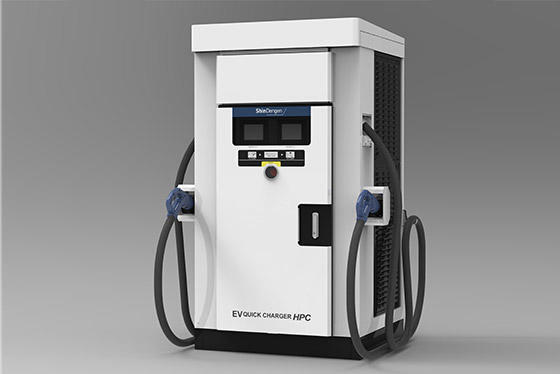What are Fast Recovery Diodes (FRD)?
This diode with a p-n junction is designed to make the reverse recovery time (trr) smaller and is also called a high-speed diode.
Compared to general rectifying diodes, the trr is 2 to 3 digits smaller because the FRD is designed with a switching power supply to rectify high frequencies of tens of kHz or hundreds of kHz.
Typical characteristics
| Withstand voltage (VRM) | High voltages such as 600 V, 800 V and 1000 V |
|---|---|
| Forward voltage (VF) |
Approximately 1.3 to 3.6 V |
| Reverse current (IR) |
Extremely small from several μA to tens of μA |
| Reverse recovery time (trr) |
Approximately tens of nS to 100 nS |
| Application |
Rectifying high voltage switching circuits (such as PFC) |
It is necessary to select and use the best type of diode according to each application, because the smaller the reverse recovery time is made, the larger the VF becomes.
Recovery characteristics of diode
One can equate trr to the “time for the holes to come back” because hole movement takes more time when compared to electron movement.
Relationship between forward current (IF) and reverse recovery time (trr)
When forward current is small
When forward current is large
How to improve trr
Heavy metal is diffused or an electron beam is irradiated onto the diode with a p-n junction to create a carrier trap in order to catch holes while they are going back. The trr is improved by 2 to 3 digits, but the VF becomes larger as a result.
A diode with this countermeasure is referred to as a high-speed diode and is generally called an FRD (Fast Recovery Diode).
Selecting and Using Fast Recovery Diodes
-
-

- VF-trr trade-off for diodes that withstand 600 V
-
General rectifying diodes
These p-n diodes are not high-speed. The trr is large, but the VF is small, around 1 V (for 600 V products). These diodes are designed for commercial frequencies, such as 50/60 Hz, and are not used on a switching circuit.
FRD
FRD stands for fast recovery diodes. They offer high-speed support and generally have a trr of approximately 50 to 100 ns. With a VF of approximately 1.5 V, it is rather large when compared to general rectifying diodes.
Another generic term for the FRD type would be a “High-speed diode.”
FRD (Ultra high-speed type)
Even among the fast recovery diodes, this diode is designed specifically for speed. The trr is approximately 25 ns, which is extremely small, but the VF is quite large at 3 to 3.6 V. This diode is used in applications that specifically require high-speed. Even if the VF is larger than this, the relative benefit of the trr is small.
This type is not just important because of its high-speed but for its soft recovery characteristics as well.
Current waveform for critical conduction mode PFC
The diode current slowly heads to OFF as indicated by the figure. The recovery current is also restricted by the inductor and does not become so large.
In this type of application, an ultra high-speed diode is not required, and using a general FRD where the VF is not really large improves efficiency.
trr of 600 V class high-speed diodes
- Example of ultra high-speed type
trr = 25 nsec (max), VF = 3.6 V (max) - Example of high-speed type
trr = 100 nsec (max), VF = 1.5 V (max)
The high-speed types are appropriate for this application.
Current waveform for continuous conduction mode PFC
As indicated by the figure, when a current flows in a diode and a reverse voltage is suddenly applied, if the current cuts off, an extremely large recovery current flows during the trr period resulting in loss.
When used in this type of circuit, a diode with the smallest trr must be used even when sacrificing the VF.
trr of 600 V class high-speed diodes
- Example of ultra high-speed type
trr = 25 nsec (max), VF = 3.6 V (max)
- Example of high-speed type
trr = 100 nsec (max), VF = 1.5 V (max)
The ultra high-speed types above are appropriate for this application.
Soft recovery and hard recovery
When the recovery current restores too suddenly, it produces more noise. As a result, the trr must not only be small but it must restore softly or smoothly.
Numbers 1 and 3 below may appear to have the same trr in the catalogue, but both the loss and noise are quite different. In addition, the number 2 appears to be extremely good when looking at the catalogue, but it produces a large noise.
-
-

- Both power loss and noise are small
-
-
-

- Power loss is small but noise is large
-
-
-

- Both power loss and noise are large
-












